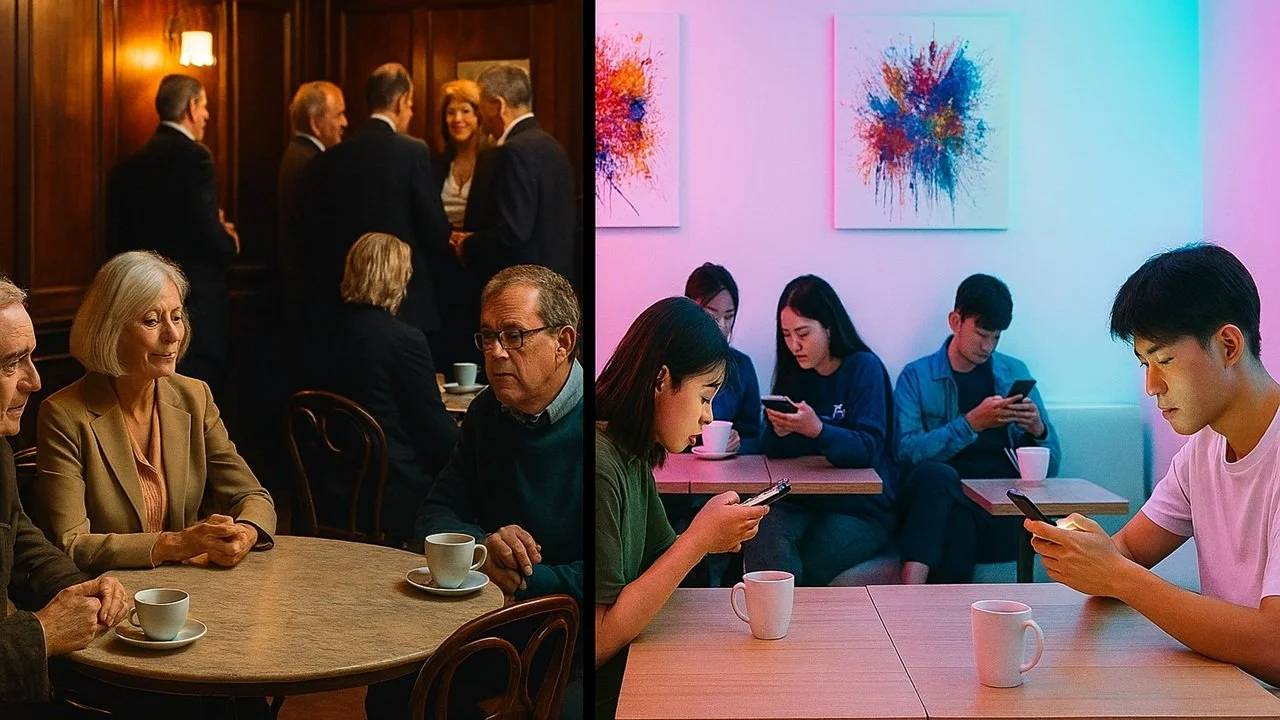What We Miss Until We See It Differently: A Chinese Strategist’s First Glimpse of Europe
When Chinese culture trend forecaster and brand strategist Grace Mou stepped off the plane in Milan, she wasn’t just arriving in Europe. She was entering a world that would challenge her assumptions about beauty, utility, technology, and time. Her reflections, shared in a recent episode of The Auto Ethnographer podcast hosted by John Jörn Stech, offer a rare and intimate look at how familiar things can feel radically different when seen through new eyes.
Take coffee, for example. In Shanghai, Grace drinks one cup a day, often infused with seasonal flavors like plum or chrysanthemum. But in Milan, she found herself drinking five cups daily, swept up in a culture where coffee is “like the air you breathe.” One moment stood out: when a barista served her a glass of sparkling water alongside her espresso. “At first, I thought it was alcohol,” she laughed. “But he explained it was to cleanse the palate—to prepare you to taste the coffee properly.” That small ritual, so ordinary to Italians, became a symbol of reverence and intentionality.
This theme of reverence extended beyond beverages. Grace was struck by how European brands prioritize aesthetics and heritage over functionality. “In China, we obsess over usefulness,” she said. “But in Europe, beauty and provenance come first.” Her visit reframed her understanding of luxury: not as a measure of utility, but as an expression of philosophy. “Sometimes, something doesn’t need to be appreciated for its usefulness. It’s appreciated because it’s beautiful.”
That insight has profound implications for branding. Grace cited Pop Mart, the Chinese toy brand known for its Labubus and blind boxes, as an example of emotional economy in action. “They’ve learned that the useless can be powerful,” she said. “Surprise and emotional resonance matter more than function.” Her trip to Europe reinforced this idea: that brands can, and should, evoke feeling, not just serve a purpose.
Another surprise came in the form of secondhand goods. “In Europe, vintage shops and circular economy brands thrive,” Grace observed. “But in China, people jump to the newest things. They don’t yet appreciate secondhand fashion.” What Europeans see as sustainability and style, many Chinese consumers still view as outdated. Grace sees opportunity here—for Chinese brands to embrace reuse, heritage, and environmental consciousness.
Technology presented perhaps the starkest contrast. “I never expected that Europe is living in the past while China is living in the future,” Grace said. Accustomed to super apps like WeChat and Xiaohongshu, she found herself anxious without constant connectivity. “I was always worried about my phone battery. But Europeans don’t care. They’re comfortable without it.” That comfort, she realized, stems from a different relationship with time and attention.
In Shanghai, mobile phones are lifelines - for payments, transport, communication. But in Europe, Grace saw people reading books in the metro, not swiping screens. “I admire that,” she said. “I wish more Chinese people would pick up magazines or printed books instead of staring at their phones.” It’s a subtle but powerful shift: from digital immersion to analog presence.
Even the pace of life felt different. “Europeans appreciate their personal space and time,” Grace noted. “They prefer face-to-face interaction over online chatting.” That preference shapes everything—from how they drink coffee to how they build brands. It’s a slower, more deliberate rhythm that values depth over speed.
Grace’s journey reminds us that cultural contrast isn’t just about difference—it’s about discovery. By seeing familiar things through unfamiliar eyes, we gain new appreciation for what we take for granted. Whether it’s a glass of sparkling water, a vintage coat, or a quiet moment without a phone, these small details reveal big truths about how we live, what we value, and how we connect.
As Grace put it, “Europe taught me that sometimes, the useless is the most meaningful.” And in that lesson lies a challenge—for brands, for consumers, and for all of us navigating a fast-moving world: to pause, reflect, and see again.
You can continue to read about Grace Mou’s insights, both on Europe and her native China, on her Substack, which is accessible at this link:

